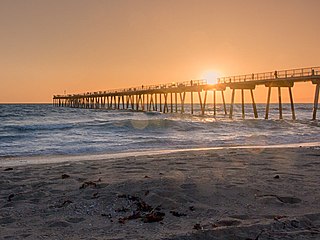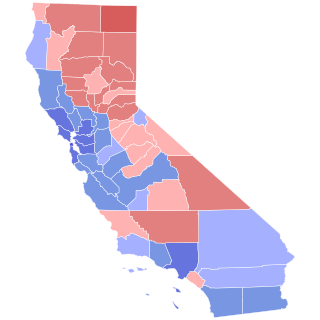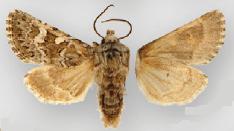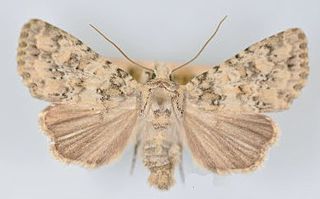
Southern California is a geographic and cultural region that generally comprises the southern portion of the U.S. state of California. It includes the Los Angeles metropolitan area as well as the Inland Empire. The region generally contains ten of California's 58 counties: Imperial, Kern, Los Angeles, Orange, Riverside, San Bernardino, San Diego, Santa Barbara, San Luis Obispo and Ventura counties.

San Bernardino County, officially the County of San Bernardino, is a county located in the southern portion of the U.S. state of California, and is located within the Inland Empire area. As of the 2020 U.S. Census, the population was 2,181,654, making it the fifth-most populous county in California and the 14th-most populous in the United States. The county seat is San Bernardino.

San Bernardino is a city and county seat of San Bernardino County, California, United States. Located in the Inland Empire region of Southern California, the city had a population of 222,101 in the 2020 census, making it the 18th-largest city in California. San Bernardino is the economic, cultural, and political hub of the San Bernardino Valley and the Inland Empire. The governments of El Salvador, Guatemala, and Mexico have established the metropolitan area's only consulates in the downtown area of the city. Additionally, San Bernardino serves as an anchor city to the 3rd largest metropolitan area in California and the 13th largest metropolitan area in the United States; the San Bernardino-Riverside MSA.

California State University, San Bernardino is a public research university in San Bernardino, California. Founded in 1965, it is part of the California State University system. The main campus sits on 441 acres (178 ha) in the University District of San Bernardino, with a branch campus of 40 acres (16 ha) in Palm Desert, California, opened in 1986. Cal State San Bernardino's fall 2020 enrollment was 19,404. In fall 2019, it had 505 full-time faculty, of which 385 were on the tenure track.

The Noctuidae, commonly known as owlet moths, cutworms or armyworms, are a family of moths. They are considered the most controversial family in the superfamily Noctuoidea because many of the clades are constantly changing, along with the other families of the Noctuoidea. It was considered the largest family in Lepidoptera for a long time, but after regrouping Lymantriinae, Catocalinae and Calpinae within the family Erebidae, the latter holds this title now. Currently, Noctuidae is the second largest family in Noctuoidea, with about 1,089 genera and 11,772 species. This classification is still contingent, as more changes continue to appear between Noctuidae and Erebidae.

The Inland Empire 66ers of San Bernardino are a Minor League Baseball team of the California League and the Single-A affiliate of the Los Angeles Angels. The 66ers are based in San Bernardino, California, and play at San Manuel Stadium.
San Bernardino Valley College is a public community college in San Bernardino, California. It is accredited by the Western Association of Schools and Colleges. The college has an enrollment of 17,044 students and covers 82 acres (33 ha). Valley College is also a part of the San Bernardino Community College District which includes Crafton Hills College located in nearby Yucaipa and the Professional Development Center in San Bernardino.
Stater Bros. Markets is a privately held supermarket chain, based in San Bernardino, California, consisting of 171 stores located throughout Southern California. It was founded in Yucaipa, California, on August 17, 1936, by twin brothers Cleo and Leo Stater when they purchased the market owned by Cleo's boss, W. A. Davis, with a $600 down payment. Cleo recalled to the Inland Empire Business Press in 1998, that the owner of the market across the street from Davis' gave him the other $300 to make the full down payment. Stater Bros. went public in 1964; Cleo, Leo, and their brother Lavoy sold their interests to the now-defunct Long Beach–based Petrolane Gas Service in 1968. The chain has been owned fully by Stater Bros. Holdings, a subsidiary of La Cadena Investments, owned by Stater's late chairman, president and CEO, Jack H. Brown, since 1986.

Fiscalini Field is a stadium in San Bernardino, California, USA. Over the years, the stadium was the spring training homes of the Pittsburgh Pirates and St. Louis Browns and was the home field for the San Bernardino Stars and the San Bernardino Pioneers. Today, Fiscalini Field is used for NCAA Division II college baseball games hosted by California State University, San Bernardino. Community college baseball games featuring San Bernardino Valley College are also played there plus San Bernardino Youth Baseball Pony league the rest of the year.

USS San Bernardino (LST-1189) was the eleventh of twenty Newport-class tank landing ships of the United States Navy (USN) which replaced the traditional bow door-design tank landing ships (LSTs). The second USN ship to be named after the city in California, the ship was constructed by National Steel and Shipbuilding Company of San Diego, California. The LST was launched in 1970 and was commissioned in 1971. San Bernardino participated in the Vietnam War, earning one battle star and took part in operations in the Middle East. The ship was decommissioned 1995 and transferred to the Chilean Navy. In Chilean service, the vessel was renamed Valdivia (LST-93) for a battle during the Chilean War of Independence. The LST was recommissioned that year and during its service, took part in humanitarian efforts following earthquakes in Chile in 2010. In 2011 the Chilean Navy took Valdivia out of service due to repairs to the ship no longer being economical.

The 2000 U.S. Senate election in California was held on November 7, 2000. Incumbent Democratic U.S. Senator Dianne Feinstein won re-election to her second full term.

San Bernardino High School (SBHS) is an American public high school and city located at 1850 North E Street within San Bernardino, California and a member of the San Bernardino City Unified School District. SBHS was granted charter as a city in 1963, under the name Cardinal City after the school's mascot, the Cardinal. SBHS is the oldest high school in the City of San Bernardino.
Apamea digitula is a moth of the family Noctuidae. It was described from the Laguna Mountains of San Diego County, California, in 2006. It is also known from western Oregon.
Apamea gabrieli is a moth of the family Noctuidae. It was described in 2000 from a specimen collected in the San Gabriel Mountains near Big Pines in Los Angeles County, California. It is not named for the mountains themselves, but for their eponym, Gabriel. It is also known from the San Bernardino Mountains.

Apamea scoparia is a moth of the family Noctuidae first described by Kauri Mikkola, Tomas Mustelin and J. Donald Lafontaine in 2000. It is one of the most common and widespread North American Apamea, being distributed from Newfoundland and Labrador to Alaska and British Columbia, and south to California and Arizona.

Psammopolia ochracea is a species of moth in the family Noctuidae. It can be found on sandy beaches in coastal California between San Francisco and Los Angeles. Adult moths are small, dark brown or reddish in colour, and active between September and October.

The Inland Empire is a metropolitan area or region inland of and adjacent to coastal Southern California, centering around the cities of San Bernardino and Riverside, and bordering Los Angeles County to the east. The bulk of the population is centered in the cities of northwestern Riverside County and southwestern San Bernardino County, and is sometimes considered to include the desert communities of the Coachella and Victor Valleys, respectively on the other sides of the San Gorgonio Pass and San Bernardino Mountains from the Santa Ana River watershed that forms the bulk of the Inland Empire; a much broader definition includes all of Riverside and San Bernardino counties. The combined land area of the counties of the Inland Empire is larger than ten U.S. states—West Virginia, Maryland, Hawaii, Massachusetts, Vermont, New Hampshire, New Jersey, Connecticut, Delaware and Rhode Island.

Aseptis ferruginea is a moth of the family Noctuidae first described by Tomas Mustelin in 2000. It is endemic to southern California. All records are from San Diego County, from an area between Boulevard-Manzanita near the Mexican border north to Lake Henshaw at altitudes of 800–1600 meters. The habitat consist of open oak forest, foothill chaparral, and in the mountain-desert transition zone.

Aseptis pseudolichena is a moth of the family Noctuidae first described by Tomas Mustelin and Ronald Henley Leuschner in 2000. It is endemic to southern California, with records from San Diego, Riverside, Los Angeles, Ventura, San Bernardino, and Tuolumne counties. The habitat consists of open pine and oak forest, open areas with grass and scrub, and foothill chaparral.
The Superior Court of California, County of San Bernardino, also known as the San Bernardino County Superior Court or San Bernardino Superior Court, is the branch of the California superior court with jurisdiction over San Bernardino County.













